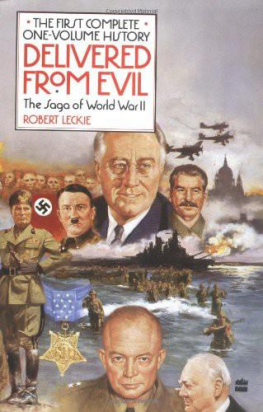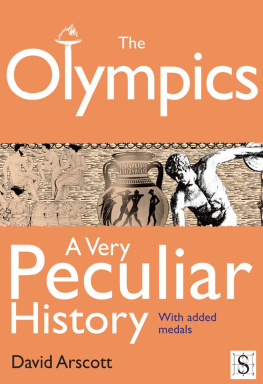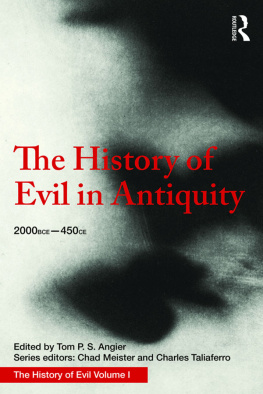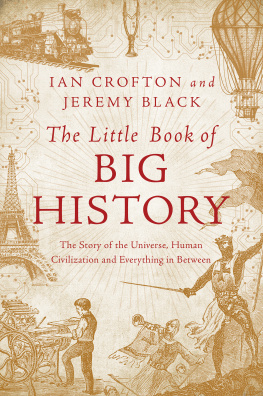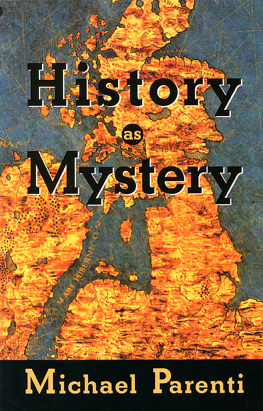4. Adolf Hitler
Adolf Hitler, the malevolent genius who became the second dictator to rise among postwar Europes despairing, disillusioned masses, was of only slightly less humble origins than Benito Mussolini. Hitlers father was born Alois Schickl-gruber, the illegitimate son of an Austrian woman named Maria Anna Schickl-gruber and an unknown father. Later a man named Johann Nepomuk Huttler, who had taken young Alois into his home, died and left him a small sum if he would change his name to Huttler. So Alois Schicklgruber became Alois Hitler (one of many variations of the name in northern Austria). He had been apprenticed as a cobbler, but at the age of seventeen he left his native village of Strones bound for Vienna and something better in life. He found it at the age of seventeen as a very junior customs official in the Austrian Ministry of Finance.
Although Alois Hitlers lack of education limited his future, he could at least rise to the rank of inspector. Because he was by then an imposing physical presencebroad-shouldered, bullet-headed, ramrod straight in his resplendent customs uniform, his thick mustaches curled in the style of Emperor Franz Josef he could also expect a certain amount of status as well as a pleasant life in the company of the drinking companions and willing chambermaids whom he met in the inns where he lived during his slow ascent up the bureaucratic ladder. Alois had a succession of wives, or mistresses becoming wives, one bastard son also named Alois, and a legitimate daughter named Angela. His last wife was Klara Polzl, the pretty granddaughter of Johann Nepomuk Huttler. She gave him six more children. Of these, her obvious favorite was the boy Adolf.
Adolf Hitler was born at Branau-am-Inn at six oclock in the evening of April 20, 1889. Two days later he was baptized in the Catholic church. Sickly at first, Adolf gradually shook off his infirmities and became a healthy baby. Perhaps it was because he survived, as her first three children had not, that Klara indulged him in every whim and desire, making of him a Muttersohnchen, a spoiled, noisy, mischievous Mamas boy. Adolf returned this affection by adoring his mother. Conversely, he came to hate his stern, authoritarian father, staying out of his way as much as possible and dreading to hear that shrill summoning whistle. Three years after Adolfs birth, Alois received his first major promotion, to the position of Higher Customs Officer at Passau across the German border. Here, too, on March 23, 1893, Klara gave birth to a fifth child, a boy named Edmund.
A week later, Alois was transferred again, this time to a higher post in Linz. Because the presence of the new baby made it impossible to take up new lodgings, the father moved on to Linz, leaving Klara with the family in Passau. It was during this period that Adolf became extremely fond of his little brother, and fonder still of his mother, in whose indulgent love he might now bask with no interference from his father. However, like all paradises, the Passau period came to an endthe family was shocked to learn that Alois had resigned from the customs service and had bought a farm in the village of Hafeld, about thirty miles southwest of Linz.
Like a true peasant, Alois had responded to the call of the land; yet, no matter how industriously he worked among his orchards and bees, the farm did not pay, simply because it was unproductive land. In the meantime, Adolf, at six years old, went to school with his twelve-year-old sister, Angela, in the nearby village of Fischlham. A teacher named Mittermaier remembered Adolf as a lively and bright youngster who stood at the head of his class, and both children as neat and orderly, obviously the product of a disciplined home. Adolf still fitted that description after Alois sold the farm and moved the family to Lambach, halfway between Linz and Salzburg.
Lambach was a medieval town, boasting a great Benedictine monastery founded in the eleventh century, as well as many other beautiful churches. Adolf was enrolled in the monks school, once again doing well and immediately falling under the Churchs spell. Ritual fascinated him, especially the sound of the black-robed monks singing Latin hymns or of the massed male voices chanting plainsong, and it was from this that his lifelong love of opera probably derived. He was also enchanted by the elegance and color of the service of the altar, of the shiny silk or satin vestments or the glittering gold of the chalices and spiky monstrances, watching with drawn breath while the solemn movements of the Mass were carried out amid the splendor of Byzantine architecture. Here again was born another loveof architectureand it may be speculated that all of this contributed to Adolf Hitlers near mystical understanding of how the masses may be moved: by massed singing, by music, by the substitution of military splendor and might for ecclesiastical awe and mystery, and above all, by the power of reiteration, as he was to learn from those daily recitals of the litanies. So impressed, the young Adolf Hitler thought often and long of becoming a monk and perhaps rising to the power and authority of an abbot, who ruled his community like a king. At this monastery also, young Adolf Hitler discovered the swastika that was to become the symbol of the Nazi Party he was to forge. It was included in the coat of arms of Abbot Theodorich von Hagen, who presided at the monastery in the middle of the nineteenth century. In German a swastika is a Haken-kreuz (crooked cross), and apparently the abbots family regarded the word Haken as a pun on their own name, Hagen. Actually, this gentle little joke was only a small part of the abbots escutcheon, but the boyish Adolf Hitler who saw and remembered it would turn it into his own crooked cross, the black spiders legs of which would sprawl across half the civilized globe.
Although life at Lambach was serene and pleasant, Alois Hitler again bought more land, this time in the little village of Leonding outside Linz. While Alois set up his beehives once more, Adolf with the other children went to the local
Volksschule, where he again did well. A year later, Edmund, who was now six, died of measles.
The death of his brother snapped something inside the soul of the ten-year-old Adolf Hitler. From a happy, good-natured, cocky, fun-loving boy to whom studies came easy, he was transformed into a morose, moody, brooding, nervous child to whom, now shorn of his self-assurance, study had become a bore and detestation. Driven even deeper into his soul now was the dichotomy dividing it between love and adulation of his mother and hatred and fear of his father. Klara became the epitome of womankind, a reincarnated Virgin Mary to whom henceforth all women would be compared and found wanting; while Alois was the forbidding father figure, living symbol of that repressive authority and power which Adolf Hitler now detested and against which he would forever rebel, until, of course, he came to possess it himself.
Between these two extremes lay the self into which the anguished youth inevitably retreated. Bereft of his brother, rejected by those teachers whom he had alienated; misunderstood, as he thought, by an unsympathetic father, he took solace from himself alone. Rejecting his books, he turned to drawing under what was to be a lifelong delusion that he had talent. After two poor years1900 and 1901at the Realschule in Linz, the equivalent of a modern four-year high school, he told his father that he would give up his studies to become an artist. Alois was appalled. His oldest son, Alois, had become a neer-do-well and all the others except Angela and the mouselike Paula, the youngest, were dead. The family fortunes depended on the seemingly gifted Adolf, and here he was at the age of twelve a failure in school who was telling his father that he would study no more but take up painting instead.

